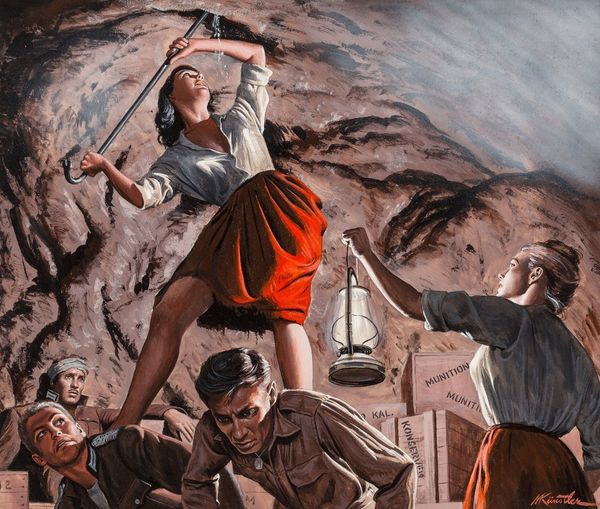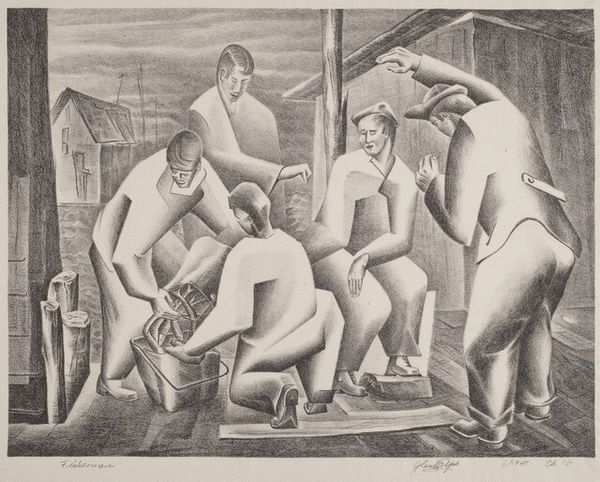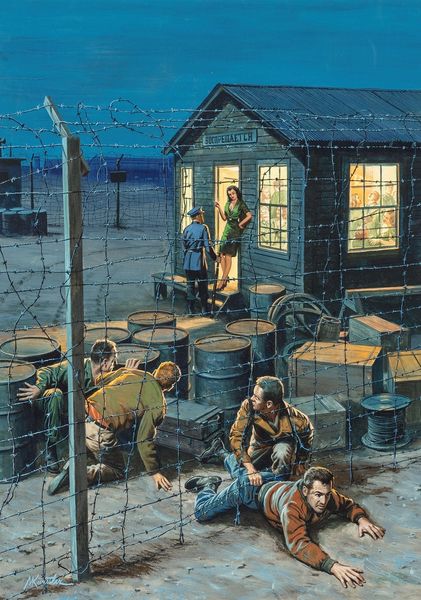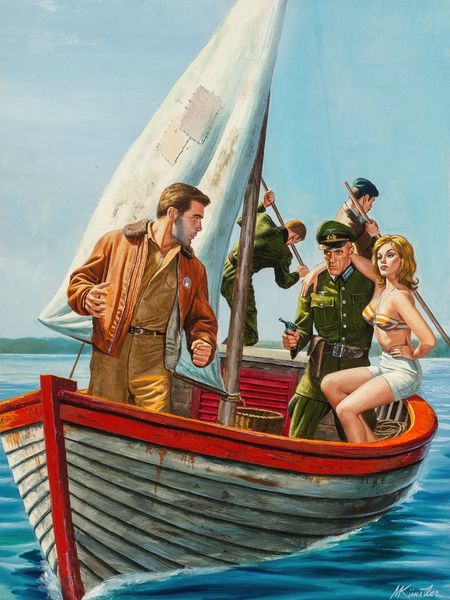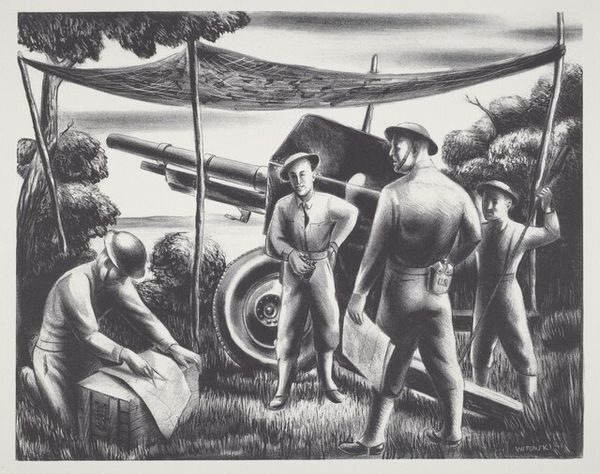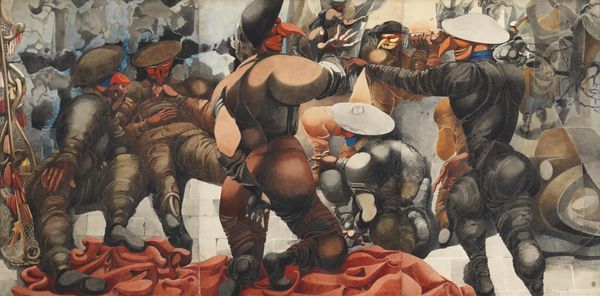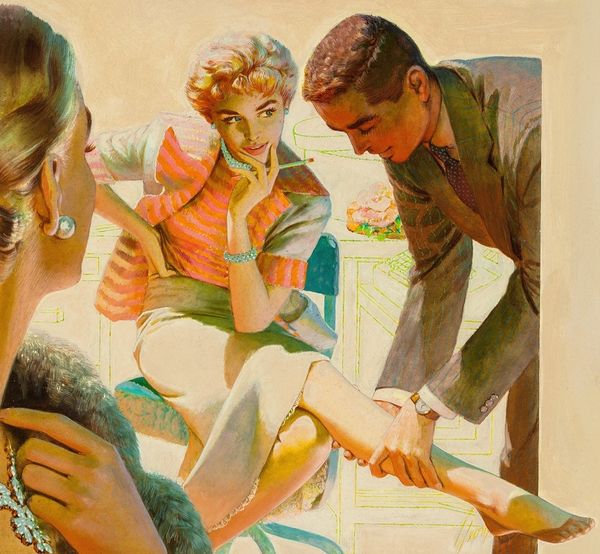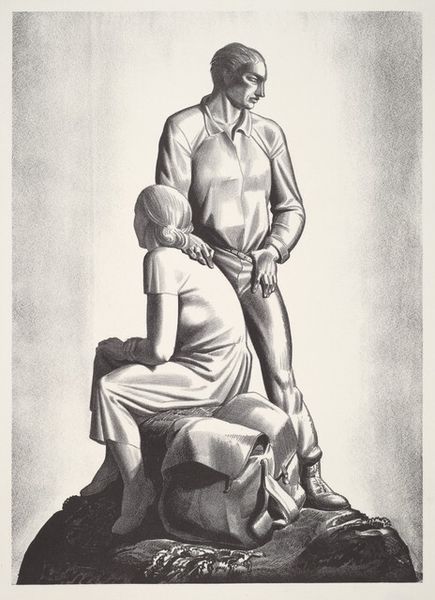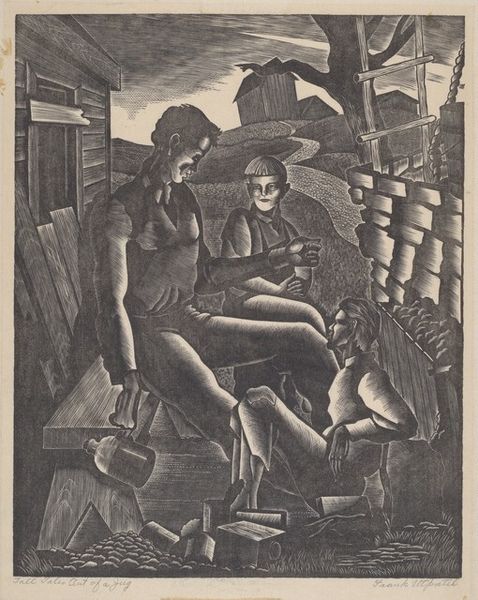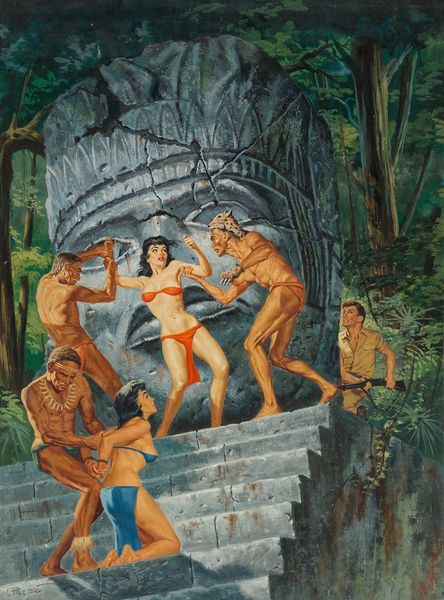
oil-paint
#
narrative-art
#
oil-paint
#
figuration
#
oil painting
#
naive art
#
genre-painting
#
portrait art
#
erotic-art
Copyright: Modern Artists: Artvee
Curator: Well, this is intense. It's giving me flashbacks to… let's just say certain graphic novels I wasn’t allowed to read as a kid. Editor: Indeed. This captivating artwork by Victor Prezio, crafted in 1962 using oil paints, is entitled "Where Sin is the Only Law". It’s quite a stark piece of storytelling. What immediate impressions do you get? Curator: Oppression, obviously. The women’s postures, the leering faces… it's unsettling. I am curious: Why "sin"? It feels very loaded. It also evokes pulp magazines. Do you feel that the title reflects the obvious exploitation depicted or attempts some kind of justification? Editor: "Sin" can be such a culturally relative term, can't it? And the visual vocabulary certainly leans into established tropes of the “exotic” and the “forbidden,” weaponized in this moment. I’m struck by the visual tension created by the artist juxtaposing those suggestive elements against the bleak reality. Curator: So, is Prezio offering us a critique, or simply titillation disguised as a moral fable? The line feels very blurred, especially given the composition. Editor: Well, look at the recurring motifs – the straw hut representing "otherness", for instance, repeated as we consider different cultures in contrast to ours. And notice how the military garb itself transforms into a signifier of power and control within a given visual framework. Even something like the colors being mostly washed-out hues contrasted with bursts of suggestive skin, it accentuates feelings of unease. Curator: It feels exploitative but definitely memorable; those colours draw you in. Are the symbols almost *too* obvious? I can’t decide if it diminishes the artistic impact, or is a stroke of pure illustrative genius? Editor: Perhaps it is less about subtlety and more about conveying a primal narrative of power, domination, and victimhood in very accessible visual terms? That bold choice gives it such enduring force – however disturbing that may be. Curator: You know, you’re right. The forcefulness – and yes, the discomfort – probably makes us confront these uncomfortable historical and societal themes head-on. And art that sparks such necessary and even awkward dialogues definitely makes its mark. Editor: I agree entirely. It's this potent combination of narrative symbolism and impactful visual storytelling that gives this work its undeniable gravity.
Comments
No comments
Be the first to comment and join the conversation on the ultimate creative platform.

